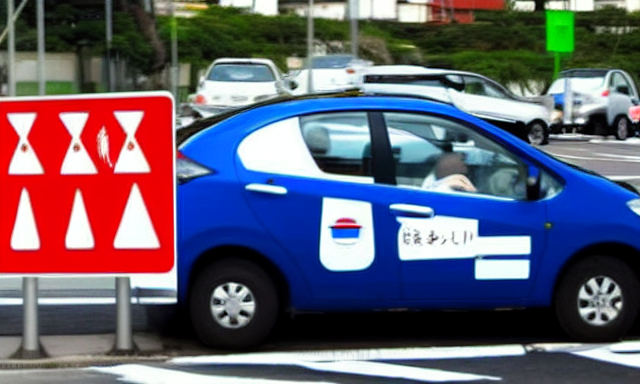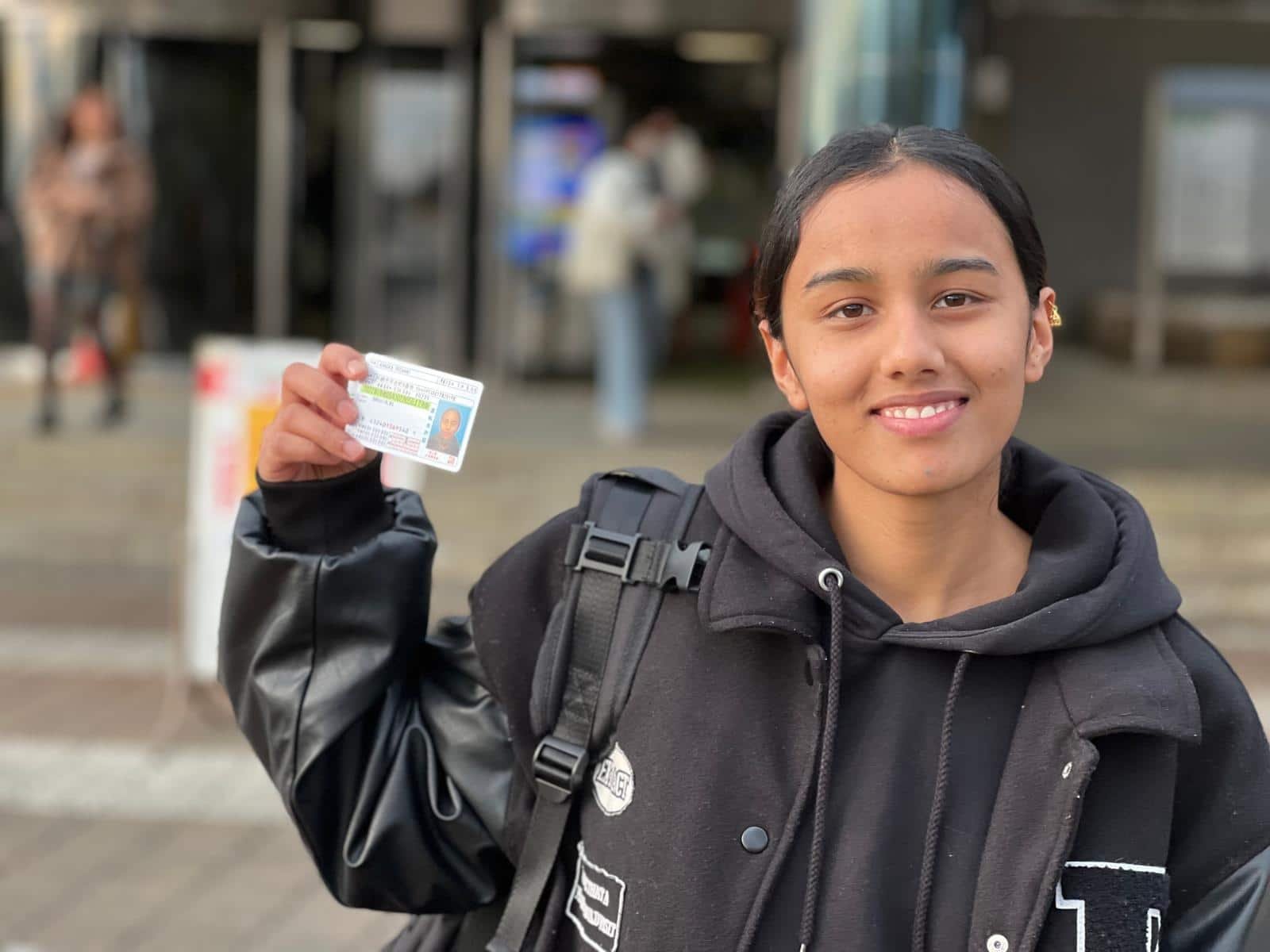We show you how to pass the driving test on the first try and get a Japanese driver’s license.
Get a Japanese driver’s license now or renew one at a special price. Make it cheap, easy and fast to get a license.
We help you to lose your fear of driving, and to get a Japanese driver’s license. Do not despair. Have no problems. We help you get a driver’s license. It doesn’t matter if you’ve never driven a car. It doesn’t matter if you are inexperienced. It doesn’t matter if you are afraid, we will guide you.
Lose the fear of driving, and apply for a Japanese driver.
How to pass the driving test in Japan
Passing the driving test in Japan involves a combination of theoretical knowledge, practical skills, and adherence to local traffic rules. Here’s a step-by-step guide on how to prepare for and pass the driving test in Japan:
1. Eligibility:
- Ensure you meet the eligibility criteria for obtaining a Japanese driver’s license. This includes having a valid visa that allows you to drive in Japan.
2. International Driving Permit (IDP):
- If you are a short-term visitor, obtain an International Driving Permit (IDP) in your home country before arriving in Japan. The IDP allows you to drive for a certain period.
3. Enroll in a Driving School:
- Consider enrolling in a driving school. Most foreign residents in Japan opt for driving schools as they often provide instruction in multiple languages. Choose a school that offers support in a language you are comfortable with.
4. Theory Classes:
- Attend the required theory classes. These cover Japanese traffic rules, road signs, and other essential information. Some schools provide study materials in English.
5. Practical Training:
- Complete the required hours of practical training. This includes hands-on driving experience under the guidance of an instructor. Practice is crucial for building confidence and skill.
6. Driving Simulator (if applicable):
- Some driving schools use simulators to enhance the learning experience. Familiarize yourself with the simulator if it is part of your training.
7. Written Test:
- Take the written test, which typically covers traffic rules and road signs. Study the materials provided by the driving school and ensure you understand Japanese traffic laws.
8. Practical Driving Test:
- Practice for the practical driving test, which includes demonstrating your ability to drive safely and follow traffic rules. Focus on parking, turning, and other maneuvers.
9. Pre-Test Evaluation:
- Your instructor will conduct a pre-test evaluation to ensure you are ready for the practical test. Use their feedback to improve your skills.
10. Test Day Preparation:
- On the test day, arrive early and make sure you have all required documents, including your IDP if applicable.
11. Practical Test:
- During the practical test, follow the examiner’s instructions carefully. Demonstrate safe driving practices, use turn signals, and observe speed limits.
12. Post-Test Evaluation:
- After the test, your instructor or examiner will provide feedback. Take note of areas that need improvement for future reference.
13. License Issuance:
- If you pass both the written and practical tests, you will be issued a Japanese driver’s license.
14. License Exchange (if applicable):
- Depending on your home country, you may be able to exchange your foreign license for a Japanese one without taking the driving test. Check eligibility with the licensing center.
15. Continuous Improvement:
- Even after obtaining your license, continue to drive responsibly and stay informed about any changes in traffic laws.
Japan road signs in English

In Japan, many road signs have English translations, especially in urban areas and along major roads. However, it’s important to note that not all road signs may have English translations, and some rural areas may predominantly use Japanese signage.
Here are some common road signs in Japan along with their English translations:
- Stop Sign:
- Japanese: 止まれ (Tomare)
- English: Stop
- Yield Sign:
- Japanese: 進入禁止 (Shin’nyū kinshi)
- English: Yield
- No Entry Sign:
- Japanese: 進入禁止 (Shin’nyū kinshi)
- English: No Entry
- No Parking Sign:
- Japanese: 立ち入り禁止 (Tachin’iri kinshi)
- English: No Parking
- Speed Limit Sign:
- Japanese: 制限速度 (Seigen sokudo)
- English: Speed Limit
- One-Way Sign:
- Japanese: 一方通行 (Ippō tsūkō)
- English: One Way
- Traffic Signal Ahead Sign:
- Japanese: 信号 (Shingō)
- English: Traffic Signal Ahead
- Pedestrian Crossing Sign:
- Japanese: 横断歩道 (Ōdan hodō)
- English: Pedestrian Crossing
- School Zone Sign:
- Japanese: 学校区域 (Gakkō kuiki)
- English: School Zone
- Turn Right Sign:
- Japanese: 右折 (Ussetsu)
- English: Turn Right
- Turn Left Sign:
- Japanese: 左折 (Sasetsu)
- English: Turn Left
- Roundabout Sign:
- Japanese: ロータリー (Rōtarī)
- English: Roundabout
- Expressway Entrance Sign:
- Japanese: 高速道路 (Kōsokudōro)
- English: Expressway Entrance
- Exit Sign:
- Japanese: 出口 (Deguchi)
- English: Exit
- Dangerous Curve Sign:
- Japanese: 危険カーブ (Kiken kābu)
- English: Dangerous Curve
Regulatory signs


Caution signs

Direction signs

Quick reference table on distances between major cities

This table shows distances in kilometers between locations when traveled via major national routes. Please use it as a quick reference for long distance travels.
For safe driving
Driving in Hokkaido lets you enjoy the splendid natural scenery as you travel on its spacious roads. However, it may ruin the fun time if you end up in a traffic accident.
Please be careful, drive safely and enjoy the ride.
Pedestrians have priority
Pedestrians always have the priority on the road. Drive carefully and slow down or stop if necessary, especially when you see children, the elderly, or the disabled.
Drive on left side
Drive on the left side of the centerline. When you cross the opposite lane for right turns, etc., slow down and beware of oncoming traffic.
Seatbelt and child car seat
Seatbelts save lives. Make sure all passengers are buckled. Children must use child car seats. These rules are stipulated by the law.
Right-side steering wheel
Most Japanese cars have the steering wheel on the right-hand side. On the right side of the wheel is the headlight/turn signal control lever, and on the left side are the wiper switch and the gearshift lever.
Do not use cell phone while
It is dangerous to talk on the phone while driving. Park at a safe spot (Using cell phone while driving is prohibited by the law) when using a cell phone.
Lane change
It is extremely dangerous to change lanes abruptly. When you switch lanes, make sure to give the signal and confirm safety using rearview mirrors.
Passing crossroads
It is immensely dangerous to make abrupt turns without signals or from wrong lanes.
- When turning to the left, stay as near as possible to the left side of the road and turn slowly along the edge of the crossroad.
- When turning to the right, stay as near as possible to the centerline and turn slowly before the center point of the crossroad.
- If a crossroad has a “follow directions” sign, make sure to choose and stay in the correct lane for going straight or turning to the right or left accordingly.
Japanese traffic lights
Do not judge by the movement of traffic; Make sure to check the light at all times.

Green light
You may go forward. Even if it’s green, however, keep an eye on the movement of other cars and pedestrians.
Yellow light
Stop. However, if you are too close to the stop line to stop safely when the signal has turned yellow, you may keep going.
Red light
Stop.
Arrow signal
When a red light comes with a green arrow, you may go in the direction of the arrow.
*Do not follow the yellow arrow. It is for streetcars only.
Do not enter Electronic Toll Collection (ETC) lane
The ETC lanes only allow vehicles with the ETC card. Other vehicles must go through the tollgate for cash. The newly introduced ETC system uses wireless communication for toll collection.
Fill up the tank before returning
Customers must pay for the fuel. Before returning the car, fill it up at a designated gas station or one near the rent-a-car company office. Use regular gasoline only. Inappropriate fuel may damage the engine. Many people make these mistakes, so be careful.
In case of accident
Do not panic in the case of an accident.
1.Check safety
Move the car to a safe spot (roadside, vacant lot, etc.) and turn off the engine. To keep other cars safe, set up the warning triangle behind the car and use the warning flare.
2.In case of injury
If someone is injured in the accident, dial 119 (no area code) to call the ambulance. If you have trouble communicating in Japanese, ask passers-by for help.
3.Call police
Dial 110 (no area code) to call the police to explain the details of the accident and file a report. You must report an accident no matter how small it is.
4.Call rent-a-car company
You must report the accident to the rent-a-car company. You may have to pay for deductible insurance fee or Non-Operation-Charge(NOC).
Traffic offenses
Be careful enough to avoid violations and enjoy driving safely.
Serious offenses, penalties, and fines
*Drunk driving *Speeding *Illegal parking *Use of cell phone while driving
| Traffic offense | Penalty | |
|---|---|---|
| Drunk driving | Driving while heavily intoxicated | Imprisonment for up to 5 years or fine of up to 1 millionyen |
| Driving while intoxicated | Imprisonment for up to 3 years or fine of up to 500,000yen |
|
| Speeding | 30 kph or more over the limit | Imprisonment for up to 6 months or fine of up to 100,000yen |
| 25-30 kph over the limit | Fine of up to 18,000yen | |
| 20-25kph over the limit | Fine of up to 15,000yen | |
| 15-20 kph over the limit | Fine of up to 12,000yen | |
| Less than 15 kph over the limit | Fine of up to 9,000yen | |
| Illegal parking |
No parking/stopping zone | Fine of up to 18,000yen |
| No parking zone | Fine of up to 15,000yen | |
| No Use of cell phone while driving |
Use of cell phone | Fine of up to 18,000yen |
| Use of cell phone (cause danger) | Imprisonment for up to one year or fine of up to 300,000 yen |
Basic road signs in Japan
Basic road signs in Japan
Driver’s Signs
Beginner drivers and aged drivers are obligated to place a sign on their vehicle as below. The sign sticker can be purchased at a car accessory shop or home improvement store.
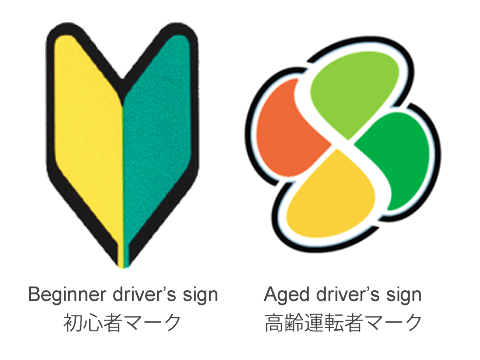
Beginner driver’s sign and Aged driver’s sign
What does the diamond mean?
The diamond shape on the road is a sign indicating a point approaching a crosswalk or bicycle crossing. The sign comes with two diamonds, one is placed at 50m, and the other is at 30m ahead of a crosswalk.
The sign “Diamond Mark”



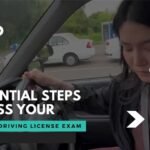
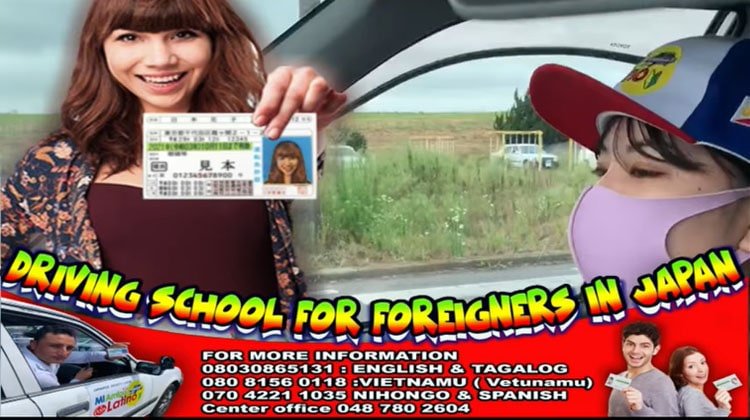
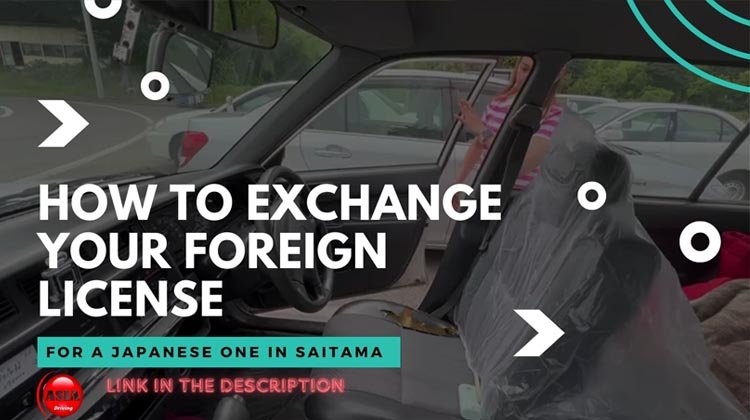
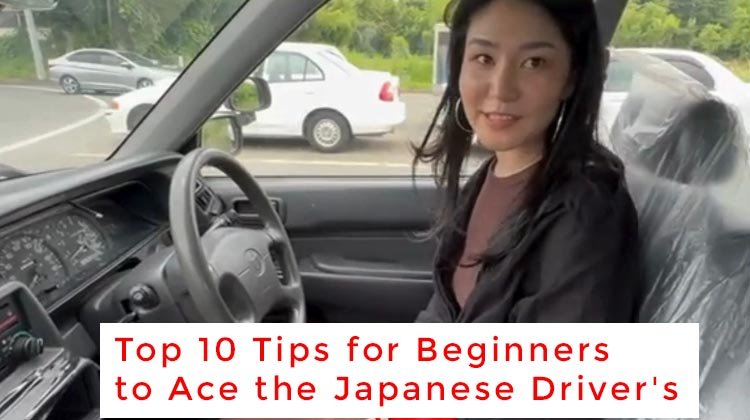
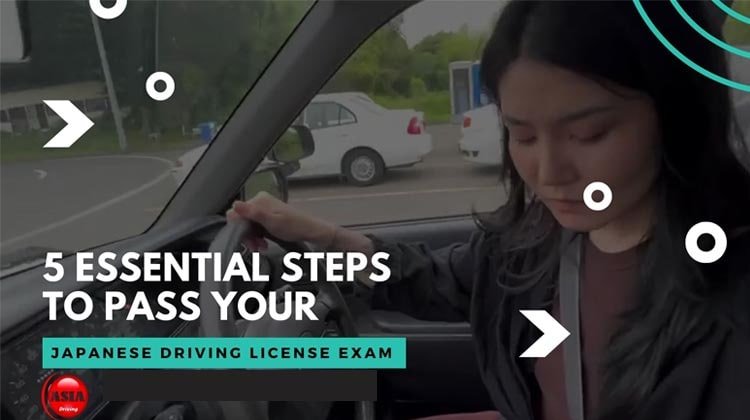

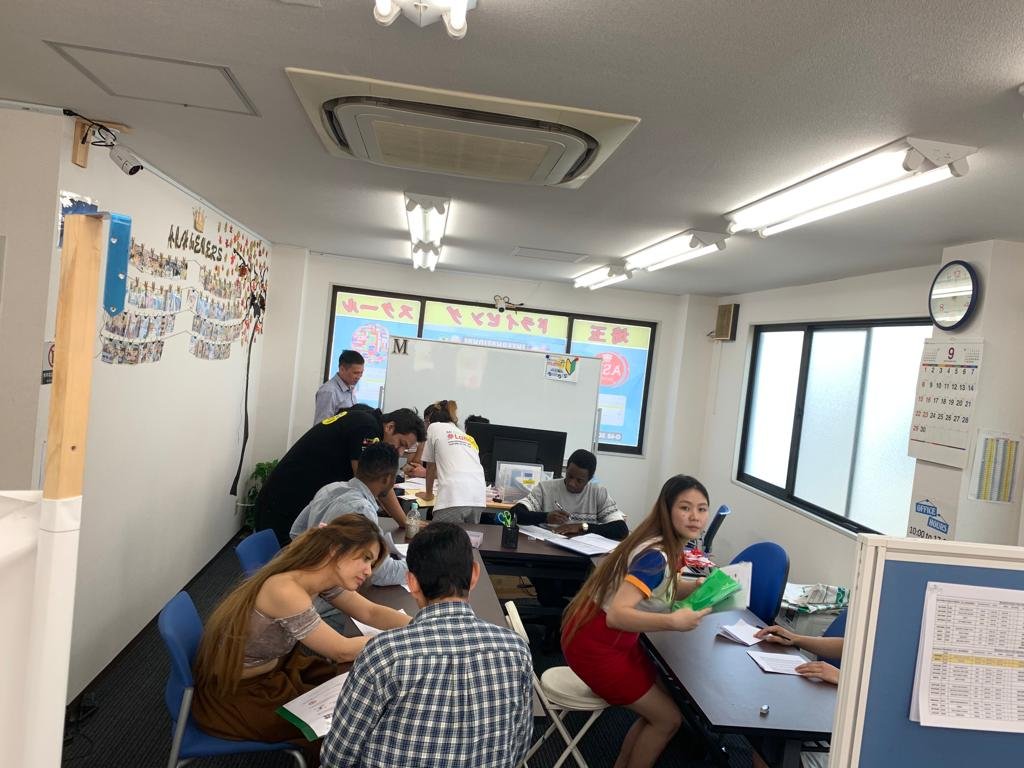
 オフィスで働く
オフィスで働く